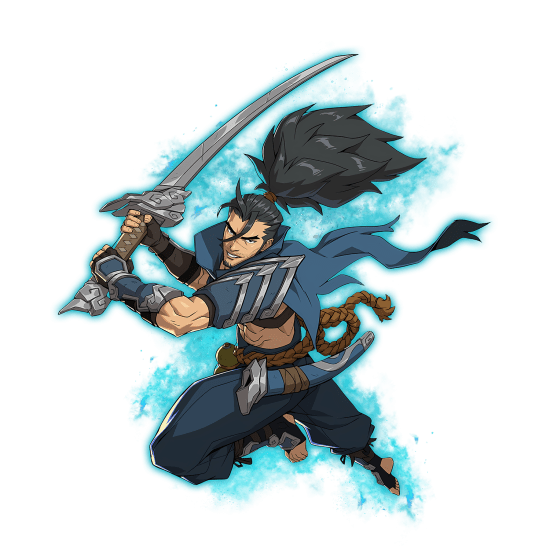2XKO is a long-awaited fighting game set in the League of Legends multi-universe and developed by Riot. Proven once again that Riot can make a banger of a game in any setting they set their aim at, 2XKO is an unbelievably fun and balanced tag-team fighting game featuring the classic cast of familiar and beloved champions. In this 2XKO Champions tier list, we attempted to rank all currently available champions from best to worst in as many categories as possible.
Why do it? Since 2XKO is one of the most accessible fighting games out there, there’s likely going to be a lot of new players trying to get into fighting games. This genre is pretty tough to get into, especially when you have to pick and learn at least one (in this game, 2) champions. So, our tier list aims to help players decide which Champions they should try out.
If the grind towards the next rank feels too slow, you can buy a 2XKO Rank Boost at SkyCoach. The fastest and most affordable rank boost provided by a team of professional gamers with top placements in tournaments nad years of experience helping other gamers.
Note: At Skycoach, you can Buy 2XKO Boost at the best prices with fast delivery. Use our special PROMO CODE (in green) hidden in this article for a 20% DISCOUNT.
How Our Tier List Works
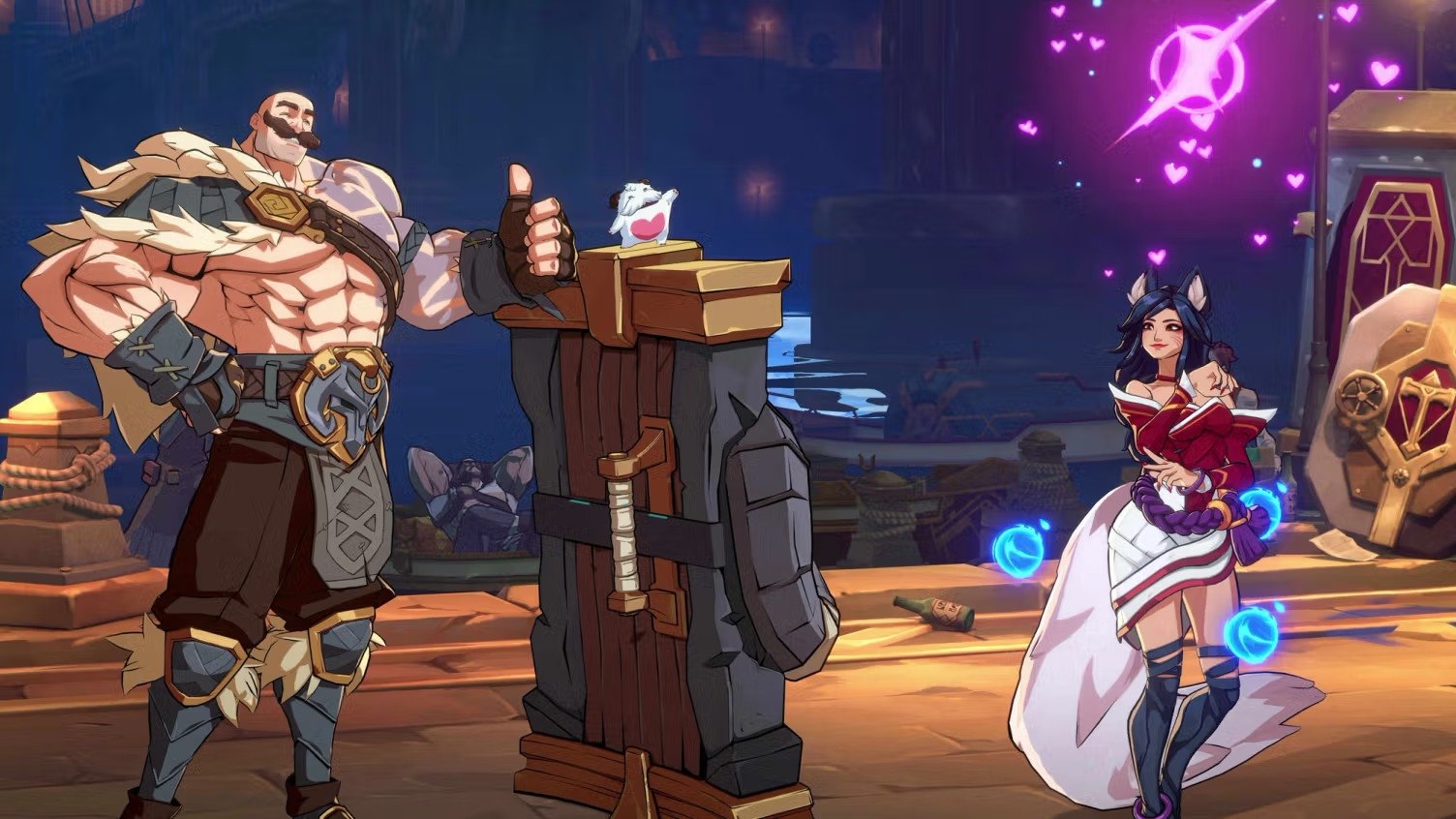
The fighting scene is very competitive, so we predict a clash between hardcore fighting games fans and newcomers. Knowing this, we decided to approach the 2XKO champions ranking as comprehensively as possible.
Here’s what our tiers mean:
- S-Tier: Meta picks. They win neutral (space control) with fast, safe tools, convert stray hits into big, stable damage, and run strong wake-up pressure (oki) without huge risk. They also pair well with many partners and fuses and add real value as assists.
- A-Tier: Tournament-ready. Solid neutral, good anti-airs and conversions, and a clear win condition, but they usually need a specific partner, assist pattern, or fuse to cover a gap (approach, reversal, throw reward, etc.). Built right, they can beat S-tiers.
- B-Tier: Competitive but support-dependent. More honest/committal neutral or average payout per touch, or their assist is situational. They need the right fuse/partner to patch weaknesses and tighter execution to keep momentum across matchups.
- C-Tier: Specialists. Narrow gameplans or weaker neutral/assist value make them inconsistent right now. They can still win with matchup knowledge and the right fuse, but they’re less reliable for climbing.
To be absolutely candid, getting 2XKO champions ranked properly would require more data, such as tournament performance, that would indicate which characters place well more consistently; buffs and nerfs to the characters that can definitely “kill” a character and shift their position in the tier list. These criteria are something that needs time, and as of writing this, 2XKO is at the start of its journey, so these things are yet to come. Rest assured, though, that we won’t leave you hanging, and we aim to update this tier list with the addition of new champions, meta shifts, and tournament data.
The Criteria Used to Evaluate Champions
We ranked each 2XKO champion by looking at how they perform both individually and as part of a team. Since 2XKO is built around 2v2 synergy and fuses, no champion was judged in isolation.
Here’s what we considered in detail:
- Neutral Control – How well a champion wins screen space using normals, movement, and specials. Characters like Yasuo and Ekko dominate here thanks to fast buttons and strong approach tools, while slower grapplers struggle to contest them.
- Combo & Conversion Potential – How easily a hit leads to meaningful damage, corner carry, and advantage. We prioritized stability (how consistent the combos are in real matches) over pure lab potential.
- Pressure & Mix Potential – Strength of a champion’s offense once they’re in. This includes high/low options, cross-ups, throw setups, and how safely they can keep momentum after a knockdown.
- Defensive Options – Quality of reversals, anti-airs, parry reward, and escape tools. Characters with multiple “get-off-me” options or strong parries rate higher here.
- Damage Output – Reward per touch. How much a champion gets off confirms, tag combos, or supers — including their consistency under Double Down fuse setups.
- Assist Value – How much their assist contributes to neutral control, lockdown, combo extensions, or pressure. Teams were often ranked around how useful an assist was in creating real offense or defense.
- Fuse Compatibility – Each fuse (Double Down, 2X Assist, Freestyle, etc.) changes the gameplan. We looked at how flexible each champion is across multiple fuses versus those who only shine in one.
- Team Synergy – Since every team has two champions, we focused on how well they cover each other’s weaknesses. Strong teams feature assists and tag options that complement both neutral and combo flow.
- Ease of Use vs Reward – Not just how powerful a champion is, but how easily that power translates in real play. Some characters like Vi are straightforward and strong, while others like Ahri need more precision to reach their potential.
- Meta Adaptability – How well a champion’s toolkit fits the early meta. Characters who dominate current fuses or popular assists naturally rank higher, while more one-dimensional picks fall behind.
If you’re seeing a lot of lingo you don’t understand, you’re probably new to fighting games, which are known to have their own terms, such as okizeme, neutral game, footsies, and so on. While compiling the 2XKO meta, we attempted to minimize the use of these words as much as possible, aiming to explain the rankings to all types of players.
2XKO Champions Tier List

The early access to the game opens up with a roster of 11 playable champions, which doesn’t it make it too overwhelming for new players but provides enough variety with truly distinct fighting character archetypes. So, check out our 2XKO champions tier list:
| Tier | Champions |
| S-Tier | Yasuo, Ekko, Ahri |
| A-Tier | Illaoi, Jinx, Darius, Warwick |
| B-Tier | Vi, Blitzcrank |
| C-Tier | Braum, Teemo |
If this rating seems odd, don’t worry, we’ll break down each individual champion and explain their place in the personal tier list and in the team’s tier list.
2XKO Best Teams Tier List
Because 2XKO is built around 2v2 combat, some champions perform far better when paired with specific partners or fuses. The best teams balance offensive momentum, assist utility, and defensive coverage — ideally creating constant pressure while minimizing risk on tags. Early access testing has already revealed several dominant pairings that define the current meta. Check out the 2XKO teams tier list for more information:
| Tier | Champions |
| S-Tier | Yasuo + Ekko, Ahri + Ekko, Illaoi + Jinx |
| A-Tier | Darius + Ekko, Ahri + Yasuo, Vi + Illaoi |
| B-Tier | Blitzcrank + Illaoi, Darius + Jinx, Vi + Jinx |
| C-Tier | Braum + Darius, Blitzcrank + Teemo |
These rankings reflect how each duo functions under fuses like Double Down and 2X Assist, and how consistently they convert assists into real advantage. Next, we’ll break down each individual champion — describing their solo performance and their best team roles (point, assist, fuse preference) — to show exactly why they landed in their respective tiers.
Best Champion in 2XKO

Yasuo is the 2XKO best champion overall right now. He wins neutral with big mid-range buttons (Steel Tempest / S1), shuts down zoning with Wind Wall, and turns stray hits into real damage from almost anywhere thanks to Calm stance cancels and flexible routes. He pressures safely, threatens high/low/left-right (e.g., Updraft into air buttons or charged Sweeping Blade cross-up), and still anti-airs reliably with one of the most oppressive 2H buttons in the game.
Weak points exist—his best stuff asks for execution and can be parried if you get predictable—but he’s uniquely self-sufficient: Yasuo doesn’t need a perfect partner to run offense, and that’s why he edges out other S-tiers.
Best Team in 2XKO
Yasuo + Ekko is the 2XKO best team. Wind Wall gives Ekko safe room to set Timewinder, Ekko’s lightning-fast assist covers Yasuo’s approaches, and both characters convert from odd angles into corner carry and solid oki. Under Double Down, their DHC/tag routes snowball damage; under 2X Assist, they lock down long enough to force real 50/50s. Even if one gets KO’d, each still functions on their own—rare in early meta duos.
Yasuo
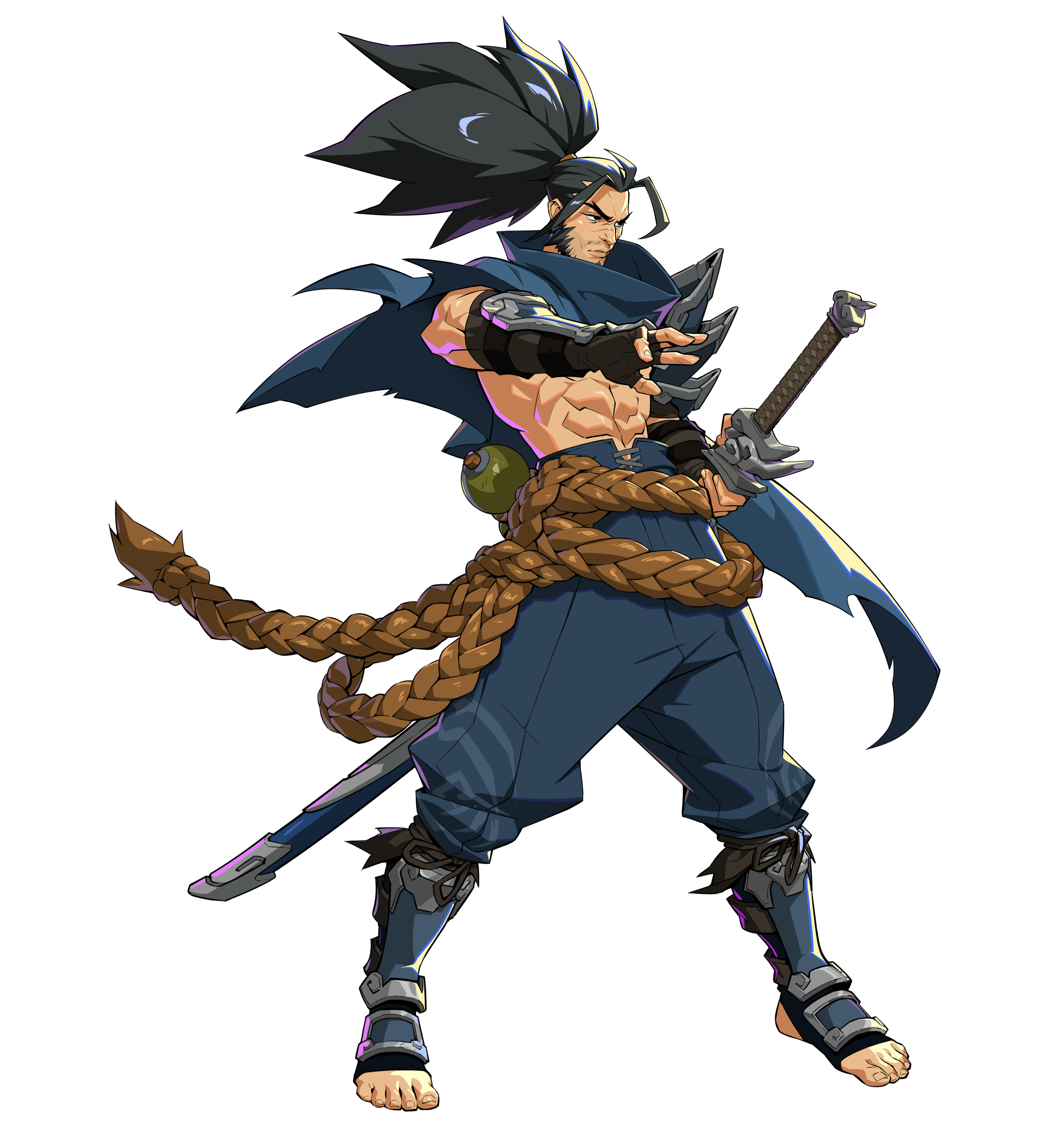 Yasuo is the face of the game right now — an all-rounder who dominates mid-range, controls neutral, and converts nearly any touch into damage. He can also be considered to be one of the 2XKO best champions for beginners.
Yasuo is the face of the game right now — an all-rounder who dominates mid-range, controls neutral, and converts nearly any touch into damage. He can also be considered to be one of the 2XKO best champions for beginners.
He’s fast, flexible, and brutally efficient when mastered. Players who enjoy aggressive neutral control and stance-based pressure will find him endlessly rewarding, but also demanding.
At his core, Yasuo is built around Calm, a stance that cancels from nearly every special and transforms his moveset into a web of mixups, crossups, and combo extensions. Combine that with Wind Wall, which deletes enemy projectiles while empowering his own specials, and you get a character who’s always dictating the pace of the match.
Why Yasuo Is in S-Tier
- Unmatched neutral presence. Steel Tempest (S1) reaches far, trades safely, and sets up Calm cancels for free pressure. Paired with Wind Wall, Yasuo can completely smother zoners and force close-range fights on his terms.
- High damage and conversion potential. Any hit — grounded or air — can route into stance follow-ups or supers, turning stray pokes into full combos.
- Constant mixup threat. Tools like Updraft, Sweeping Blade (6S1 hold), and Gale Blade (j.S1 hold) create endless left-right and high-low layers.
- Self-sufficient pressure. Yasuo doesn’t rely on assists to apply offense, which makes him consistent even in solo situations.
Still, he isn’t autopilot. Execution matters. Mastering stance buffering, kara-cancels, and gap timing takes practice, and overusing block-string gaps can invite parries. Even so, Yasuo’s space control, combo freedom, and stability make him the strongest all-around champion in 2XKO’s early meta.
Team Value: Yasuo pairs best with Ekko, Jinx, or Illaoi, who can either cover him during approach or extend his corner pressure. Under Double Down, he can end rounds off a single confirm, and with Freestyle, he creates unpredictable crossup sequences that punish even top-level defense.
Ekko
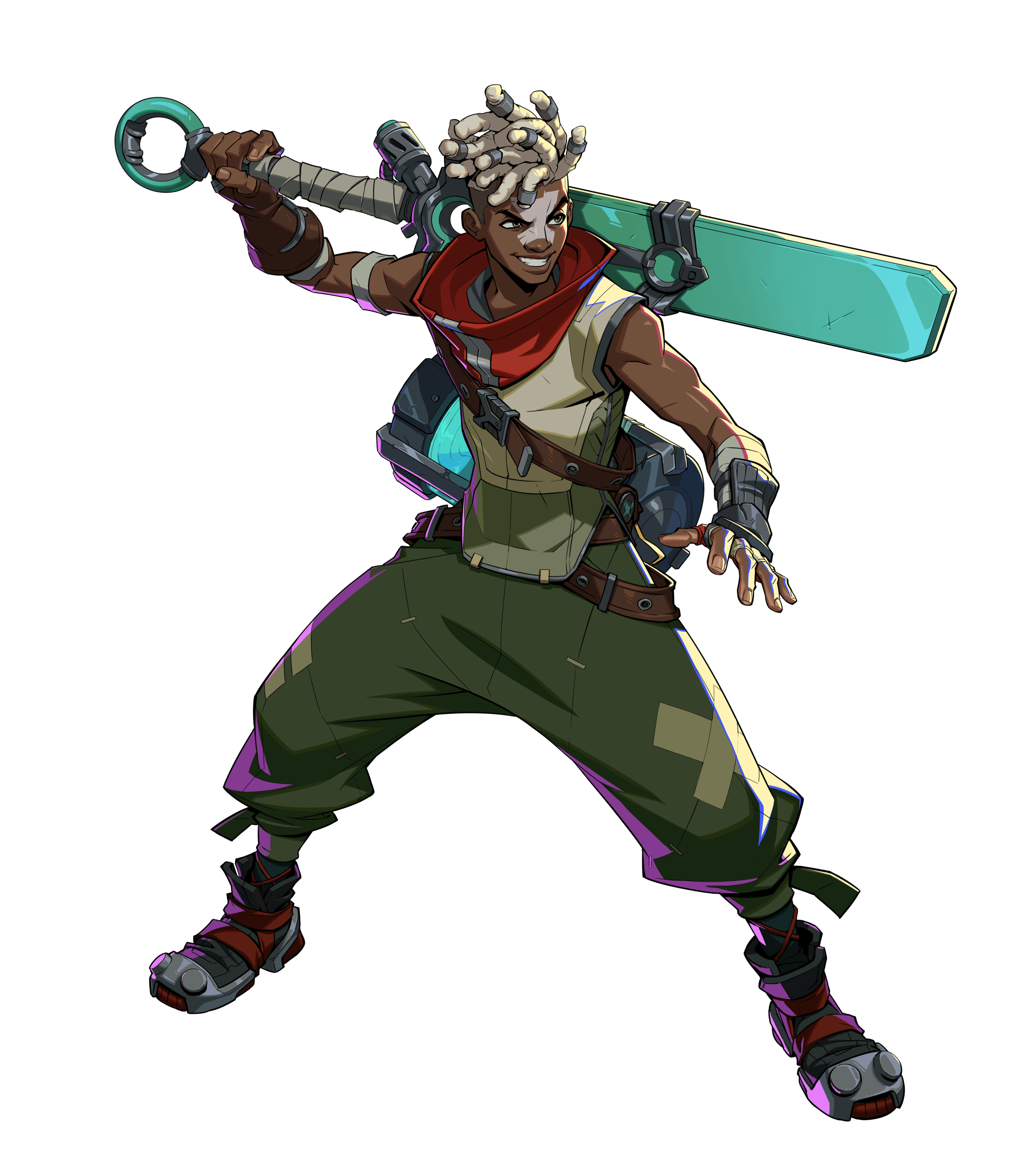 Ekko is one of the 2XKO top champions who embodies the mixup archetype — a high-speed, high-expression character who uses mobility, time manipulation, and clone setups to bend the flow of a match. He’s flashy, technical, and always unpredictable. If Yasuo defines structure, Ekko defines chaos.
Ekko is one of the 2XKO top champions who embodies the mixup archetype — a high-speed, high-expression character who uses mobility, time manipulation, and clone setups to bend the flow of a match. He’s flashy, technical, and always unpredictable. If Yasuo defines structure, Ekko defines chaos.
What sets him apart is Timewinder, a slow-moving projectile that acts like a moving wall of pressure. It locks opponents down, buys assist cooldown time, and creates guaranteed setups once he’s in range. From there, his clone install gives him access to wild left/right and high/low resets that turn every knockdown into a guessing game.
Why Ekko Is in S-Tier
- Timewinder control. It’s the best zoning and setup tool in the game, letting Ekko control neutral and reposition safely.
- Unrelenting offense. His clone install enables true vortex pressure with multiple mixup options — once he starts, the opponent rarely gets their turn back.
- Elite mobility. Short hops, teleports, and fast backdashes make him a nightmare to lock down.
- Excellent assists. His projectile and forward-dash assists both define team pressure across the cast, fitting into nearly every composition.
Ekko’s flaws lie in his fragility and reach — he has lower health and stubby normals, meaning he must rely on smart movement rather than brute force. But once he’s in control, the round often snowballs beyond recovery.
Team Value: Ekko works equally well as point or flex. He thrives with Yasuo, Jinx, or Illaoi, and his assists alone justify slotting him into most teams. Double Down amplifies his combo potential, 2X Assist keeps his neutral suffocating, and Freestyle unlocks some of the nastiest sandwich setups in the current meta.
In short, Ekko is the momentum king of 2XKO — the player who dictates the pace almost always dictates the outcome, and no one bends time to their advantage better than him.
Ahri
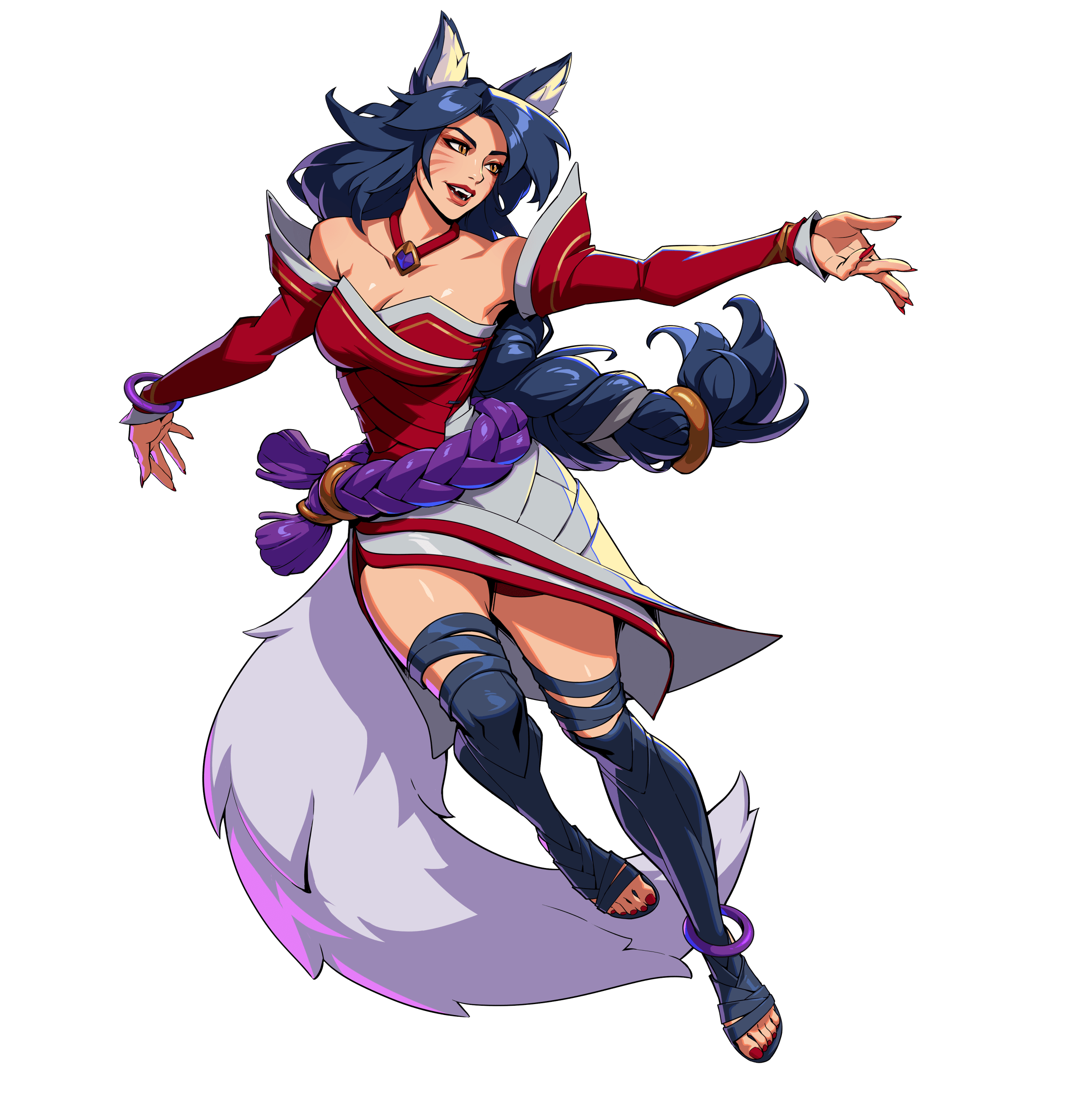 Ahri, the Nine-Tailed Fox, embodies the purest form of rushdown among the 2XKO best characters. She’s fast, fluid, and dangerous up close — a champion built to overwhelm through mobility, pressure, and mixups that never seem to end. Skilled players can dance around opponents with constant air dashes, forcing them to guess between crossups, high-lows, or instant side swaps.
Ahri, the Nine-Tailed Fox, embodies the purest form of rushdown among the 2XKO best characters. She’s fast, fluid, and dangerous up close — a champion built to overwhelm through mobility, pressure, and mixups that never seem to end. Skilled players can dance around opponents with constant air dashes, forcing them to guess between crossups, high-lows, or instant side swaps.
She thrives in the thick of combat, using her spirit magic and aerial control to dictate the pace. While many characters rely on assists to start offense, Ahri can generate her own openings through speed and unpredictability. Once she’s in, it’s her game to lose — and with good execution, she rarely gives that game back.
Why Ahri Is in S-Tier
- Relentless pressure. Ahri’s rushdown tools let her stay in motion constantly, turning every blocked move into another mixup opportunity. Her aerial approach is nearly unreactable once she starts layering dashes and orb setups.
- Flexible offense and defense. She can transition between keep-away zoning and aggressive rushdown, adjusting to the opponent’s rhythm and exploiting any hesitation.
- Strong corner control. Few champions can trap and condition opponents in the corner like Ahri. Her high-low options and fast recovery make escaping her sequences incredibly difficult.
- Excellent synergy. Ahri pairs naturally with characters like Ekko and Yasuo, who extend her strings or create sandwich setups that amplify her mix potential.
Ahri’s one weakness is consistency — some of her key combo starters whiff at range, and her execution barrier is steeper than most. Dropping a link can mean losing pressure, so precision matters. But when mastered, she’s an unstoppable force that defines the current S-tier meta.
Ahri pairs best with Ekko, Yasuo, or Jinx, all of whom can keep pressure going while she repositions for another rushdown sequence. With Freestyle, she unlocks true double-layered crossups, and Double Down lets her chain supers off tag confirms with ease. As an assist, she provides fast projectile cover that helps all-in teams safely re-enter neutral.
Illaoi
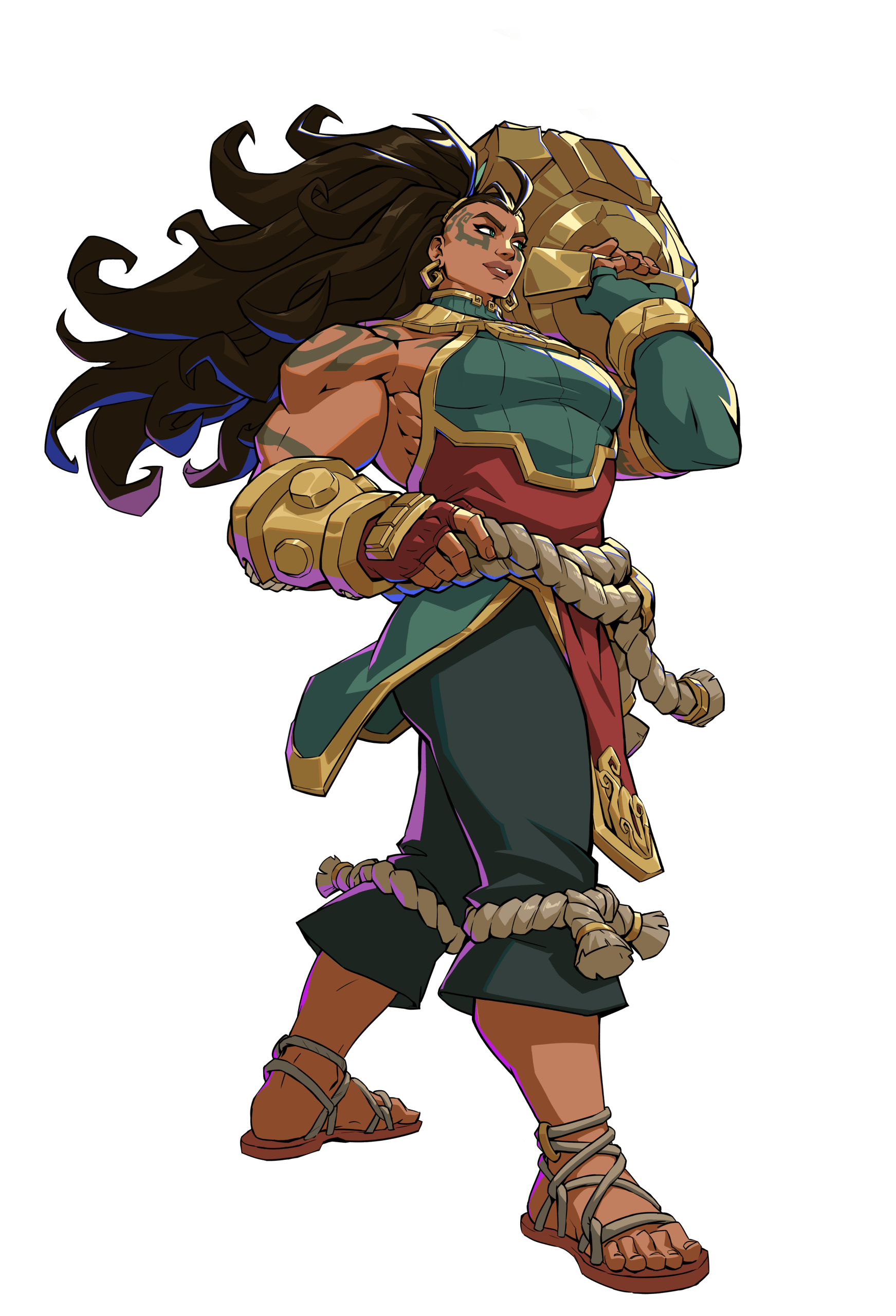 Illaoi, the Kraken Priestess, is pure brute force wrapped in divine power. She dominates through pressure, range, and sustained corner control, using her tentacles to create a permanent threat zone wherever she stands. Once she gets momentum, it feels almost impossible to move her — she doesn’t chase the opponent; she makes them fight on her terms.
Illaoi, the Kraken Priestess, is pure brute force wrapped in divine power. She dominates through pressure, range, and sustained corner control, using her tentacles to create a permanent threat zone wherever she stands. Once she gets momentum, it feels almost impossible to move her — she doesn’t chase the opponent; she makes them fight on her terms.
Her tentacle mechanic defines her playstyle. Every successful special creates a tentacle that enhances her next attacks, extending combos and multiplying pressure opportunities. It’s a slower, setup-heavy approach than most rushdown characters, but once her system is active, Illaoi’s control of the screen becomes suffocating.
Why Illaoi Is in A-Tier
- Crushing corner pressure. Illaoi’s tentacle setups turn every knockdown into a guessing game. Her oki is relentless — opponents must choose between blocking, rolling, or risking a parry, and all can lead to punishment.
- High damage and range. Every hit from Illaoi feels heavy, and her long-reaching normals allow her to dominate neutral exchanges once she sets up her space.
- Strong team synergy. Illaoi pairs perfectly with characters who can help her get in or cover her setup time. Champions like Ekko or Ahri can build pressure while Illaoi prepares tentacles for a guaranteed follow-up.
- Top-tier assists. Both of her assists cover wide areas, offering team utility in neutral and combo extension, making her valuable even when she’s not on point.
Her weaknesses come from speed and predictability. Illaoi’s neutral is slow and can be punished by faster characters who stay airborne or control distance with projectiles. She also depends heavily on her tentacles being active — without them, her offense loses bite.
Illaoi thrives when supported by partners who can buy her setup time — especially Ekko, Vi, or Ahri. Her assists are some of the best in the game for extending combos and locking opponents down in the corner. With 2X Assist, she becomes a defensive wall; with Double Down, she turns every tentacle setup into devastating team damage.
Still, when her game plan clicks, she becomes one of the most oppressive characters in 2XKO. Illaoi’s presence on screen alone can dictate the pace of a match, and that raw control earns her a firm spot in A-tier.
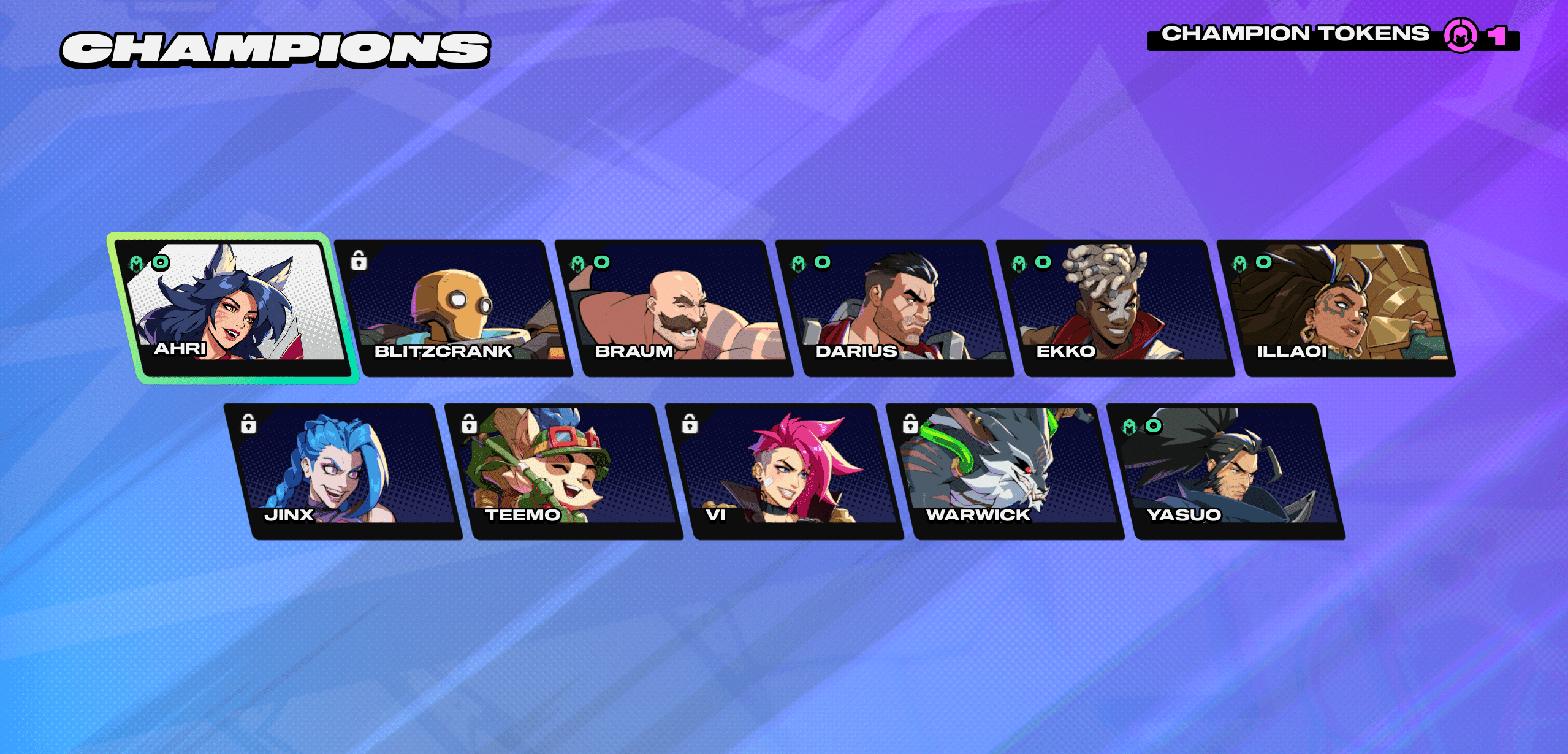
Jinx
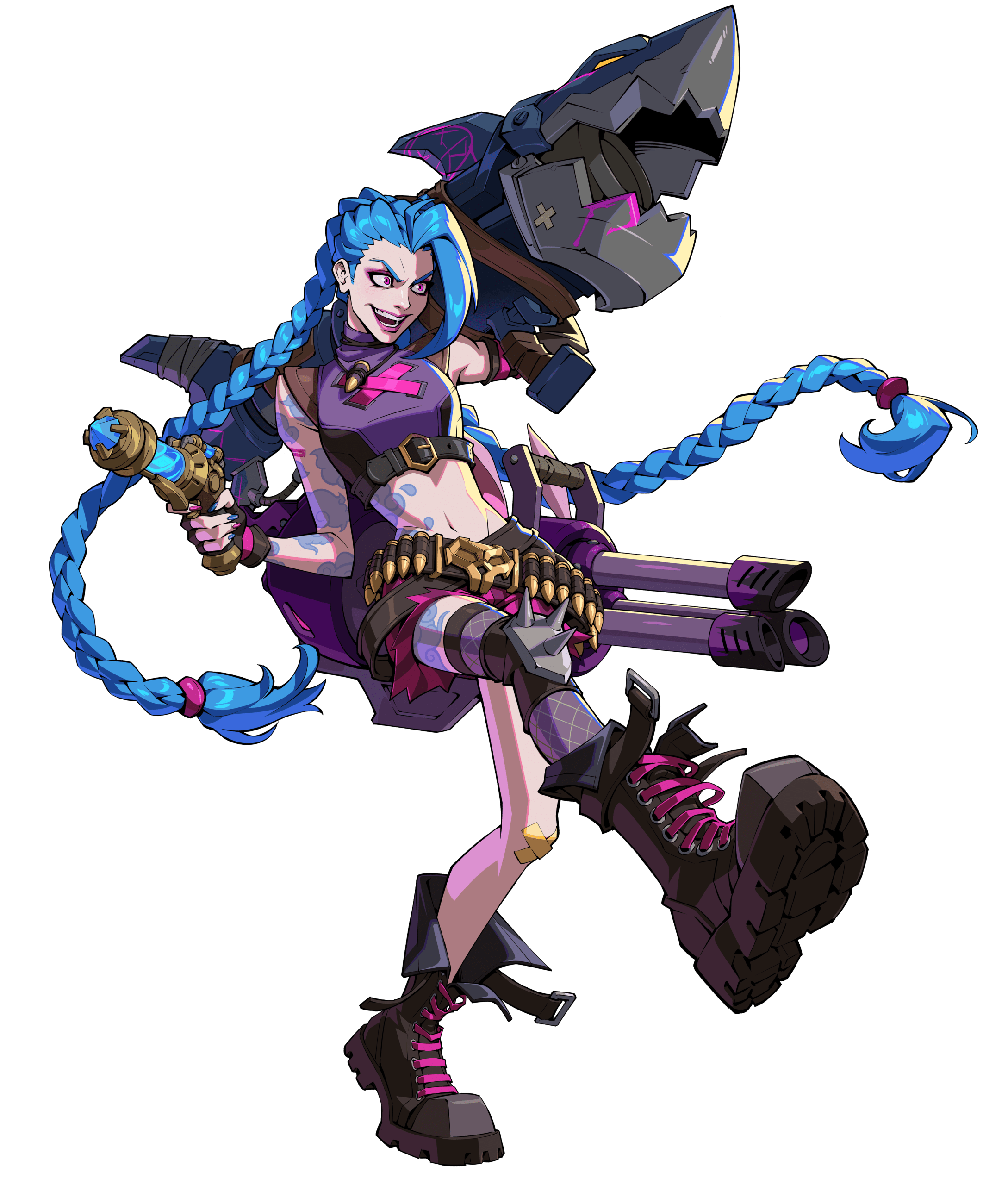 Jinx, the Loose Cannon, turns every match into chaos incarnate. Armed with an array of guns, traps, and explosives, she dominates through zoning, corner setups, and oppressive projectile play. She’s not designed to win through brute force or rushdown — instead, she forces her opponent to play her game, controlling space with relentless pressure from afar.
Jinx, the Loose Cannon, turns every match into chaos incarnate. Armed with an array of guns, traps, and explosives, she dominates through zoning, corner setups, and oppressive projectile play. She’s not designed to win through brute force or rushdown — instead, she forces her opponent to play her game, controlling space with relentless pressure from afar.
What makes Jinx so dangerous isn’t just her range — it’s how easily she turns zoning into lethal offense. Once she corners her opponent, her traps and okizeme setups create layers of pressure that rival even rushdown characters. A single mistake can lead to devastating combos, especially when paired with Double Down, her most oppressive synergy fuse.
Why Jinx Is in A-Tier
- Lethal keep-away tools. Jinx excels at forcing mistakes through constant projectile pressure, punishing anyone trying to close the gap. Her zoning is both offensive and reactive.
- Powerful corner setups. Once she locks an opponent down, Jinx can loop pressure using traps, bombs, and assists, leading to long oki sequences that are hard to escape.
- Great synergy with Double Down. Her super beam and tag setups let her support nearly any teammate, turning safe block strings into deadly mixups.
- Reliable assists. Jinx’s projectile assist is one of the best zoning supports in the game, giving her team neutral control while she repositions or reloads.
Her main drawbacks lie in mobility and dependency. She’s slow on the ground and struggles to escape pressure once opponents get in her face. Many of her best setups rely on assists or meter, which makes her far more team-dependent than top-tier duelists like Yasuo or Ahri.
Even with those limits, Jinx remains a constant threat in the meta. Her control over the screen, her oppressive team utility, and her sheer explosive potential easily secure her place in A-tier — a champion who thrives on turning patience into panic.
Jinx excels in any team that benefits from zoning pressure or long-range coverage. She pairs especially well with Illaoi, Darius, and Vi, who capitalize on her projectile lockdown to get in safely. Her Double Down synergy is meta-defining — chaining her super beam into partner confirms. 2X Assist setups also make her traps even more oppressive, forcing constant defensive respect.
Darius
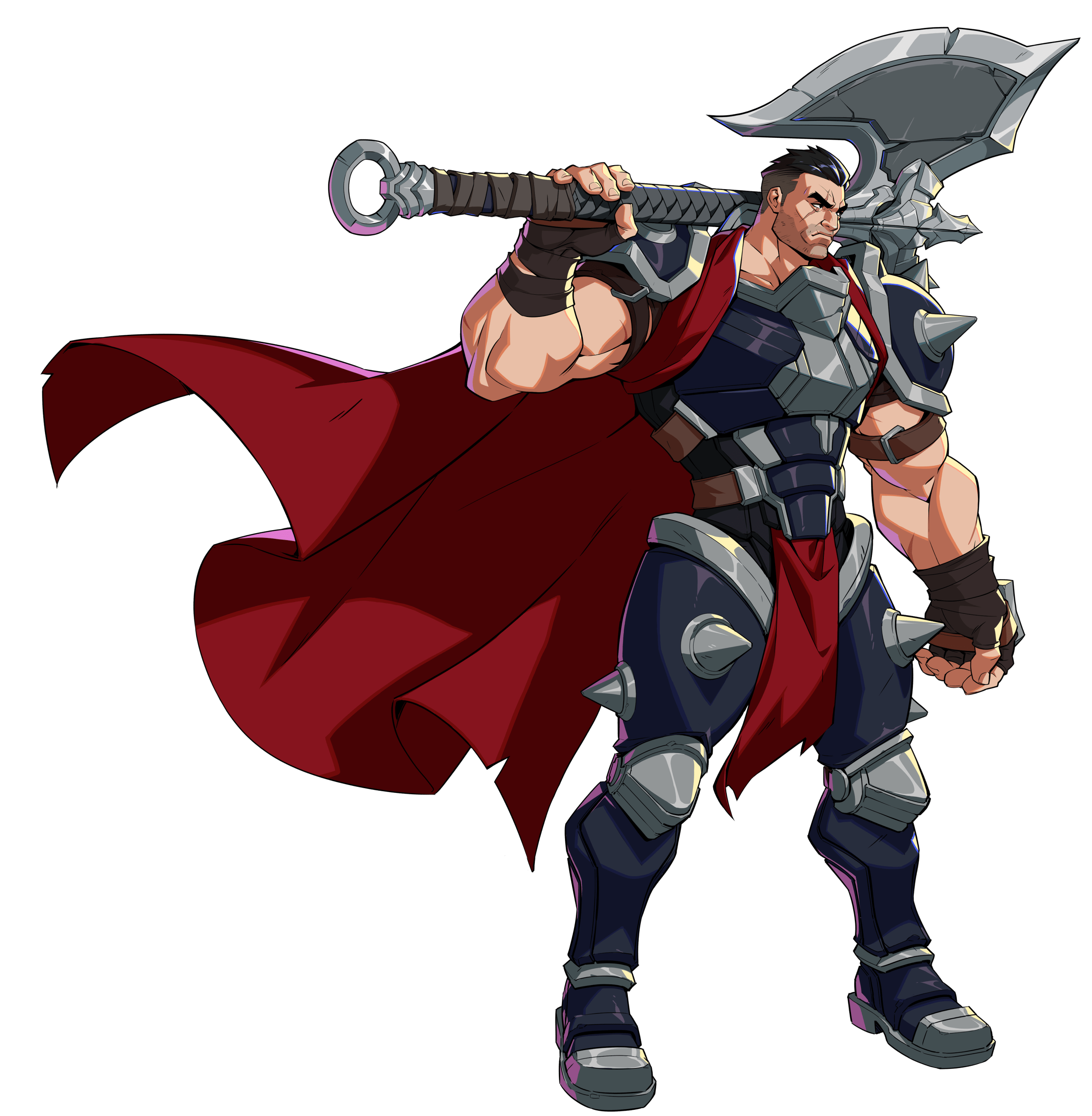 Darius, the Hand of Noxus, brings raw, oppressive power to the 2XKO roster. He’s an all-rounder bruiser who thrives in mid-range combat, using long-reaching normals and heavy-hitting specials to control the pace of a fight. His Wound mechanic adds constant chip damage pressure, rewarding aggressive play and forcing opponents to make bad defensive decisions.
Darius, the Hand of Noxus, brings raw, oppressive power to the 2XKO roster. He’s an all-rounder bruiser who thrives in mid-range combat, using long-reaching normals and heavy-hitting specials to control the pace of a fight. His Wound mechanic adds constant chip damage pressure, rewarding aggressive play and forcing opponents to make bad defensive decisions.
He’s designed to keep opponents locked down once he gets in — every swing of his axe feels punishing, and his toolkit offers strong anti-airs, armor-breaking specials, and a super that cuts through zoning. Darius doesn’t need fancy setups to hurt you — his damage output and screen control do the talking.
Why Darius Is in A-Tier
- High reward, low barrier. Darius is one of the easiest champions to pick up, but still incredibly strong at all levels of play. His fundamentals — spacing, punishing, and pressure — are straightforward yet rewarding.
- Dominant mid-range control. His long-reaching attacks and huge hitboxes let him keep most opponents in check. Once he gets the life lead, it’s difficult to approach him safely.
- Massive chip potential. The Wound debuff allows Darius to deal chip damage even on block, effectively forcing the opponent to respect every swing and giving his team extra pressure opportunities.
- Excellent defensive tools. With anti-air grabs and armored specials, Darius can punish reckless approaches and maintain momentum even when cornered.
Still, Darius has clear weaknesses — his mobility is sluggish, and his offense can become predictable against players who parry or space properly. Without an assist to help him close gaps, he struggles to open defensive opponents.
Even so, his sheer damage output and utility make him a cornerstone pick for players who want strength and simplicity in one package. Darius isn’t flashy, but he’s brutally effective — a reliable A-tier bruiser who embodies what it means to win through power and presence.
Darius fits comfortably into aggressive, assist-heavy compositions where he can stay on point and control the mid-range. He pairs best with Ekko or Jinx, who can compensate for his slower mobility and extend his combos. Under 2X Assist, he can pressure indefinitely; with Juggernaut, his already oppressive chip damage becomes nearly unmanageable for most teams.
Warwick
An infamous beast prowling the depths of Zaun, Warwick embodies primal aggression and relentless offense. Fueled by Bloodlust, his playstyle revolves around sustained pressure, unpredictable leap angles, and oppressive mixups that keep opponents guessing. His claws and fangs carve through defense, rewarding momentum-heavy players who thrive on chaos and close-quarters control.
Why Warwick Is in A-Tier
Warwick brings pure animal ferocity to 2XKO. His Bloodlust mechanic grants enhanced properties to key moves, letting him chain relentless attacks with improved recovery and extra combo potential. Specials like Rage of the Beast and Primal Leap make him nearly unstoppable once he’s in range.
- Ferocious offense: Warwick thrives on continuous aggression — his enhanced Bloodlust state gives him frame advantage and lets him ignore defensive options.
- Unpredictable mobility: Airborne cancels like Aerial Primal Vault and Primal Leap allow him to attack from unexpected angles and maintain air dominance.
- Consistent damage: His moves convert stray hits into strong, stable combos that end with knockdowns or Bloodlust activations.
- Excellent synergy: Pairing Warwick with characters like Ahri or Ekko amplifies his rushdown potential, allowing for sandwich pressure or extended corner routes through Freestyle or Double Down.
His weaknesses come from limited range and predictable approach patterns — without assists or meter, Warwick struggles to get in safely. Once cornered, he relies heavily on reads or reversals like Feral Feast to regain control. Still, when unleashed, his momentum is unmatched, earning him a solid A-Tier spot.
Team Value: Warwick performs best as a point character supported by zoning or mixup-heavy assists. Teammates like Ekko or Jinx give him coverage during approach, while Double Down amplifies his Bloodlust payoff for devastating tag sequences.
Vi
 Vi, the Piltover Enforcer, is all about getting in and never letting go. She’s a rushdown powerhouse built for players who love to apply pressure, reading opponents and punishing hesitation with explosive punches. Her boxing-inspired Footwork stance gives her mobility few others can match, letting her weave through projectiles and close gaps in an instant.
Vi, the Piltover Enforcer, is all about getting in and never letting go. She’s a rushdown powerhouse built for players who love to apply pressure, reading opponents and punishing hesitation with explosive punches. Her boxing-inspired Footwork stance gives her mobility few others can match, letting her weave through projectiles and close gaps in an instant.
Vi shines in offense-heavy matchups. Once she’s in range, she can chain relentless pressure with command grabs, crossups, and frame traps, leaving her opponents terrified to press a button. Her meterless reversal through Blast Shield also makes her surprisingly strong on defense, giving her options to reset momentum without relying on assists.
Why Vi Is in B-Tier
- Explosive offense. When Vi’s in, she’s terrifying — her Footwork stance enables fast mixups and allows her to bait reactions for punishing counterhits.
- Excellent pressure resets. She can end combos in ways that keep her close, creating endless loops of offense with assists or careful reads.
- Strong defensive tool. Blast Shield gives Vi a way out of pressure without spending meter, letting her break free in clutch moments.
- Flexible assists. Crater Maker is one of the most versatile assists in the game, working as both an anti-air and combo extender.
However, Vi’s major weaknesses hold her back from higher tiers. Her stubby normals make neutral difficult against characters with better range like Yasuo or Illaoi. She struggles to get in without Footwork, and her air game is practically nonexistent, leaving her vulnerable to zoning and jump-heavy opponents.
Vi is a high-energy brawler who rewards bold, aggressive play — but she lacks the safety nets that define the top-tier cast. In the right hands, she can overwhelm anyone, but her limited reach and reliance on reads place her firmly in B-tier for now.
Vi works best as a point character with partners who can cover her stubby range — Illaoi, Jinx, or Ekko are her strongest allies. She benefits heavily from Freestyle, enabling creative Footwork mixups and command grab setups. On assist, Crater Maker remains one of the most versatile options in the game, giving her teammates both anti-air and OTG utility.
Blitzcrank
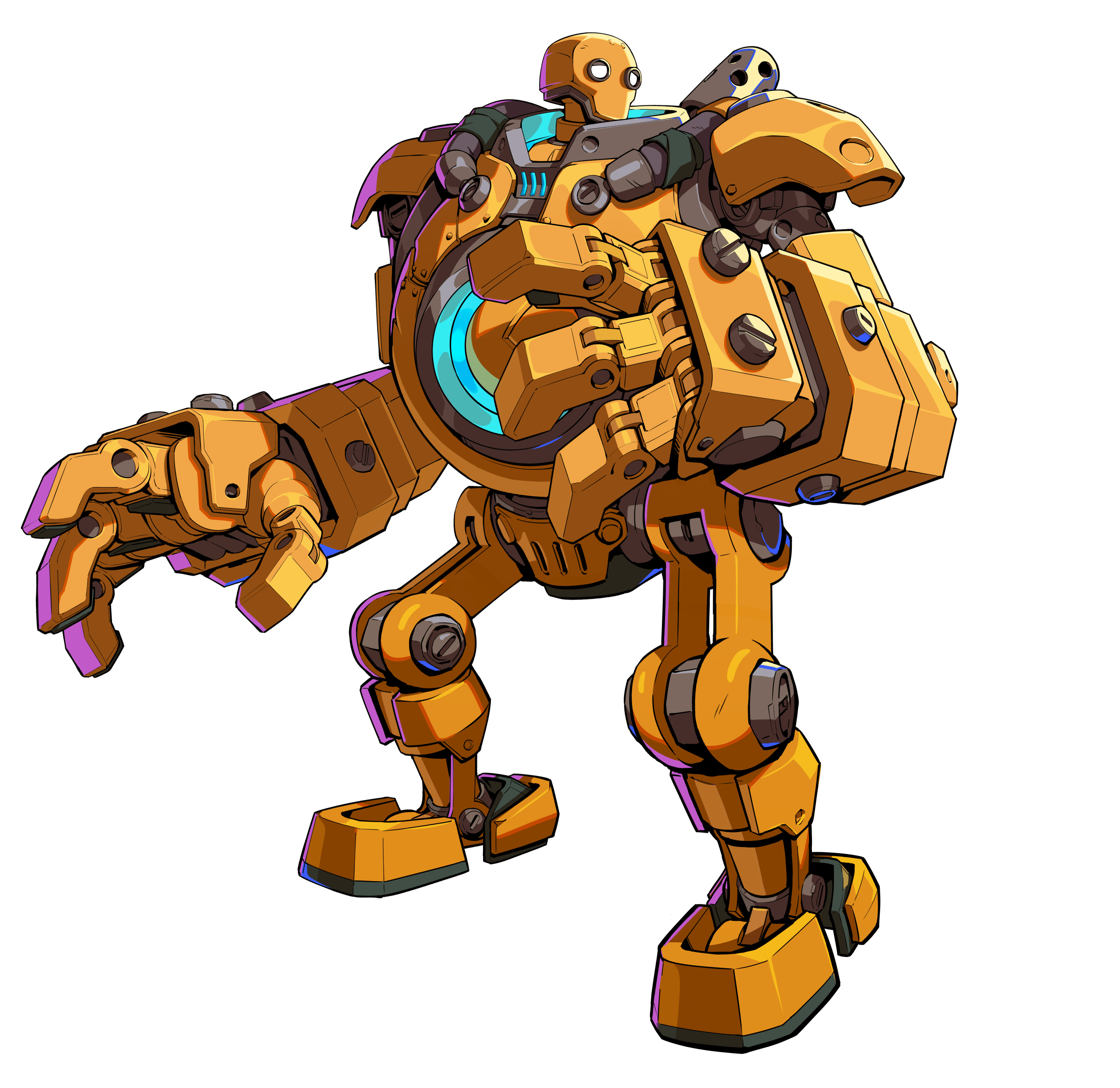 Blitzcrank, the Great Steam Golem, is 2XKO’s resident grappler — a hulking mechanical menace built to control space and punish mistakes with devastating grabs. Originally designed for waste disposal, Blitz now uses that immense power to pull opponents straight into danger with their signature Rocket Grab. Their playstyle rewards patience and precise reads, focusing on one key goal: get in, grab, and make it count.
Blitzcrank, the Great Steam Golem, is 2XKO’s resident grappler — a hulking mechanical menace built to control space and punish mistakes with devastating grabs. Originally designed for waste disposal, Blitz now uses that immense power to pull opponents straight into danger with their signature Rocket Grab. Their playstyle rewards patience and precise reads, focusing on one key goal: get in, grab, and make it count.
Unlike faster fighters, Blitz doesn’t need to outpace opponents — they dictate the pace. Their Steam mechanic powers up specials, adding armor, damage, and combo potential. In team play, Blitzcrank shines as a support anchor, offering some of the strongest assists in the game, capable of both anti-airing and restanding opponents to extend pressure or confirm kills.
Why Blitzcrank Is in B-Tier
- Incredible assists. Both Rocket Grab and other assist options are among the most versatile in 2XKO, enabling combo resets and lock-ins for nearly any teammate.
- High payoff on hits. A single grab can swing the round — Blitz converts stray hits into big damage and corner pressure.
- Steam mechanic adds flexibility. Powering up abilities with Steam turns Blitz’s toolkit from basic to brutal, giving armor or explosive follow-ups that keep opponents guessing.
- Excellent team utility. Works best when paired with fast, mixup-heavy partners like Ahri or Yasuo who can cover Blitz’s slower approach.
Still, Blitzcrank’s mobility and range limitations hold them back in 1v1 scenarios. Their slow movement and long charge times make neutral difficult, especially against zoners or mobile rushdown characters. Once cornered, Blitz struggles to escape without a read or assist cover.
Despite these flaws, Blitzcrank earns their spot as a B-tier grappler with top-tier support value. Their grabs are game-changing, their assists can define team dynamics, and their power spikes make every round feel like a ticking time bomb — for their opponents.
Blitzcrank shines as a support anchor, pairing best with fast and mixup-heavy partners like Ahri, Ekko, or Yasuo. Their assists can pull enemies straight into teammate combos or lock them down after a knockdown. 2X Assist enhances Blitz’s restand potential, while Juggernaut turns their Steam-powered grabs into round-ending punishes.
Braum
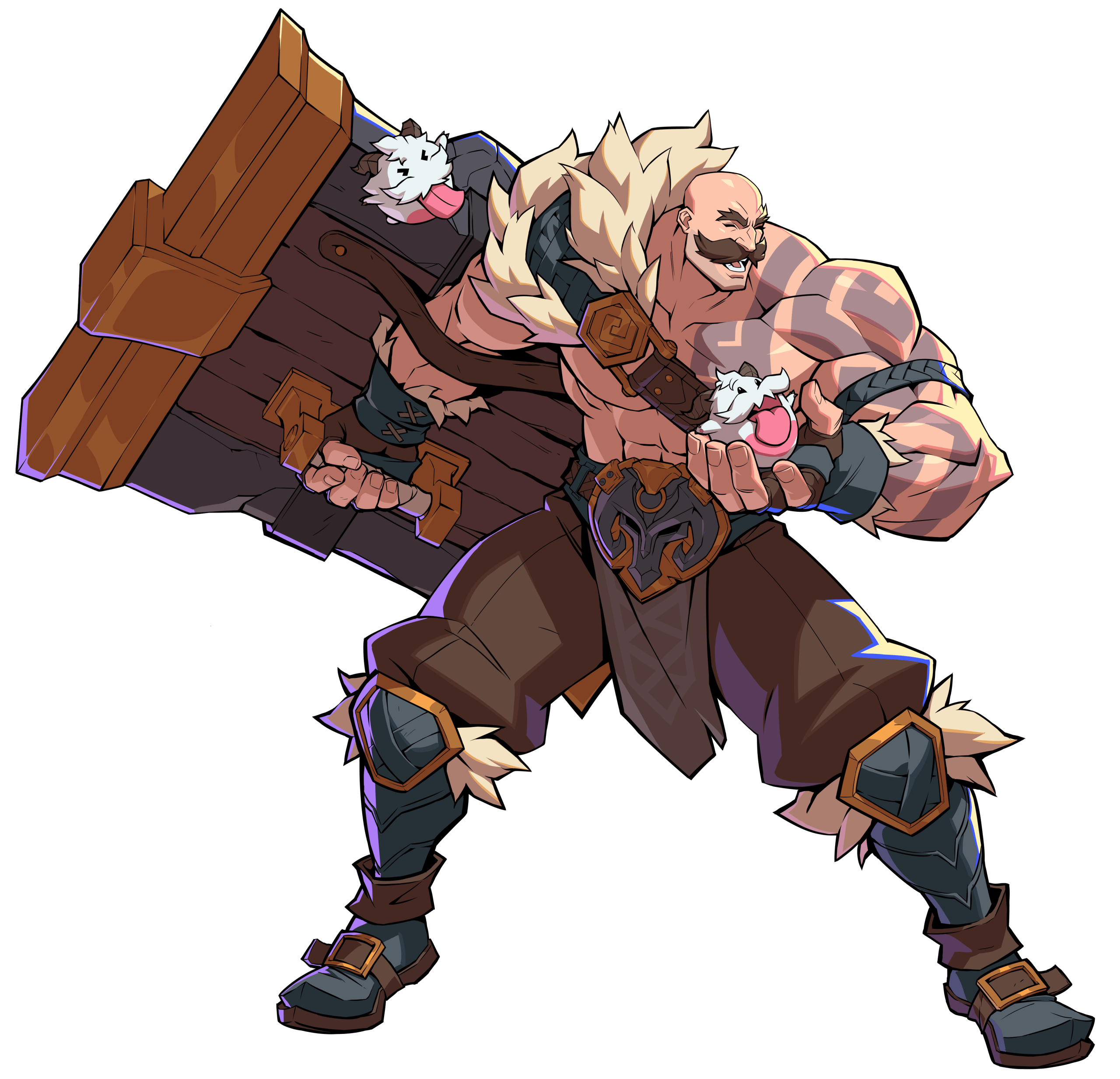 Braum, the Heart of the Freljord, is the definition of a wall — both figuratively and literally. This defensive bruiser uses his massive shield and raw strength to protect allies, absorb damage, and turn defense into offense. While most fighters rely on speed or range, Braum wins through sheer resilience and smart positioning, making him a cornerstone pick for players who enjoy tactical, team-oriented gameplay.
Braum, the Heart of the Freljord, is the definition of a wall — both figuratively and literally. This defensive bruiser uses his massive shield and raw strength to protect allies, absorb damage, and turn defense into offense. While most fighters rely on speed or range, Braum wins through sheer resilience and smart positioning, making him a cornerstone pick for players who enjoy tactical, team-oriented gameplay.
His Unbreakable mechanic gives him armor on several shield-based normals and buffs his specials, letting him absorb hits and retaliate instantly. In team play, Braum is a lifesaver — his Stand Behind Me move grants near-limitless protection to assists, letting teammates execute high-risk setups safely. His assists also rank among the strongest defensive tools in the game, keeping enemies at bay and creating space for zoning or setup-heavy allies like Jinx.
Why Braum Is in C-Tier
- Exceptional defense and team protection. Braum can cover assists, absorb projectiles, and control space with his Unbreakable state, making him one of the best defensive supports.
- Enhanced specials during Unbreakable. When active, Braum’s moves gain armor, freeze effects, and bonus damage, rewarding careful meter and timing management.
- High survivability. His large health pool and armor options let him outlast opponents who try to brute force through him.
However, Braum’s main weaknesses are what keep him in C-Tier. His mobility is painfully slow, and his range leaves him helpless against fast or zoning-heavy opponents. Without assists to cover his approach, Braum struggles to gain ground and can be easily kept out by top-tier characters like Ahri or Ekko. Additionally, his playstyle doesn’t mesh well with certain Fuses, reducing flexibility in team compositions.
Braum’s skill set makes him an excellent support anchor but a weak solo fighter. In coordinated play, he can turn defense into opportunity — but in most matchups, his sluggish pace and limited offensive reach keep him from breaking out of the lower tiers.
Braum works best alongside Jinx, Teemo, or Illaoi, covering their setups with his exceptional defensive assists. His Stand Behind Me assist allows zoning teams to play freely without worrying about punishment. Under 2X Assist, he provides near-constant shield coverage, while Juggernaut or Sidekick can make him a surprisingly durable frontline in the right comp.
Teemo
 Teemo, the Swift Scout, brings chaos and trickery to 2XKO. As a trap-based zoner, he’s designed to frustrate opponents with relentless hit-and-run tactics. Representing Bandle City’s mischievous spirit, Teemo controls the battlefield through a mix of mobility, setups, and precision. His toolkit revolves around Bandle Merit Badges, a unique system that rewards consistency — every successful trap or projectile hit strengthens his offense and utility over time.
Teemo, the Swift Scout, brings chaos and trickery to 2XKO. As a trap-based zoner, he’s designed to frustrate opponents with relentless hit-and-run tactics. Representing Bandle City’s mischievous spirit, Teemo controls the battlefield through a mix of mobility, setups, and precision. His toolkit revolves around Bandle Merit Badges, a unique system that rewards consistency — every successful trap or projectile hit strengthens his offense and utility over time.
Teemo’s playstyle focuses on controlling space and punishing impatience. His Noxious Traps can cover key points on the stage, limiting enemy movement, while Sharpshooting Scout and Bandle Dash let him reposition quickly and fire from unexpected angles. He shines in team compositions that need zoning control or stall potential, especially when paired with aggressive partners who can capitalize on forced approaches.
Why Teemo Is in C-Tier
- Strong zoning potential. His traps and darts make him one of the best characters for stage control, especially in slower-paced matches.
- Scaling rewards. The Bandle Merit Badge system grants him power the longer he survives, creating strong momentum if he’s left unchecked.
- Evasive movement. His small hitbox and evasive tools make him slippery, ideal for avoiding direct confrontations.
- Solid assist utility. Noxious Trap Assist disrupts enemy setups and adds strong lockdown potential for teammates.
- Low survivability and weak pressure. Teemo’s lightweight frame and lack of burst damage make him crumble under fast, close-range characters.
- High setup dependency. He requires time and planning to become effective, often struggling to regain momentum once cornered.
Teemo is a creative specialist character — annoying, tactical, and rewarding for patient players, but too situational to thrive in a fast-paced meta. In coordinated play, his traps can turn the battlefield into a minefield, yet his fragile nature and lack of consistent damage keep him securely in C-Tier for now.
Teemo’s ideal teammates are Jinx, Braum, or Ahri — characters who either amplify his zoning or protect him while he builds badge stacks. With 2X Assist, his traps dominate screen space, while Freestyle enables tricky tag setups that create instant mixups. He’s a situational but clever support pick when used to frustrate and outzone the opponent.
Conclusion
2XKO is shaping up to be an excellent fighting game, and a free one at that, which is a first in this genre. The Runeterra champions are a perfect fit for a fighting game, so its a chance for all fans to see their favorite characters up close.
Gameplay-wise, 2XKO feels both casual enough with the option to use auto-combos but also incredibly complex thanks to it being 2v2 rather than 1v1. So, not only do players have to learn two characters instead of one, they also have to learn to use them concurrently in the same round, which is super difficult compared to similar fighting games where you only get to play as one character. So, with this champions tier list, we hope that you have a better idea of what each champion represents. Good luck, out there!
F.A.Q.
Who is the best character in 2XKO?
Yasuo currently holds the top spot. His balance of range, speed, and pressure gives him unmatched consistency in solo and team play, making him the face of the early-access meta.
What is the best team in 2XKO?
The strongest teams right now are:
- Yasuo + Ekko — the most dominant synergy overall
- Ahri + Ekko — elite mixup pressure with fast tags
- Illaoi + Jinx — zoning and setup power with huge corner control
What champion is best for new players in 2XKO?
Darius is ideal for beginners. His fundamentals are simple, his moves hit hard, and his toolkit teaches spacing and pressure without requiring complex execution.
What character is easiest to learn in 2XKO?
Darius and Vi are both easy to pick up. They rely on clear, direct tools and don’t require heavy stance or combo management.
Are 2XKO champions unlocked for free?
Yes. All 2XKO champions are free and available from the start, letting players experiment with every character and team combination without restrictions.




